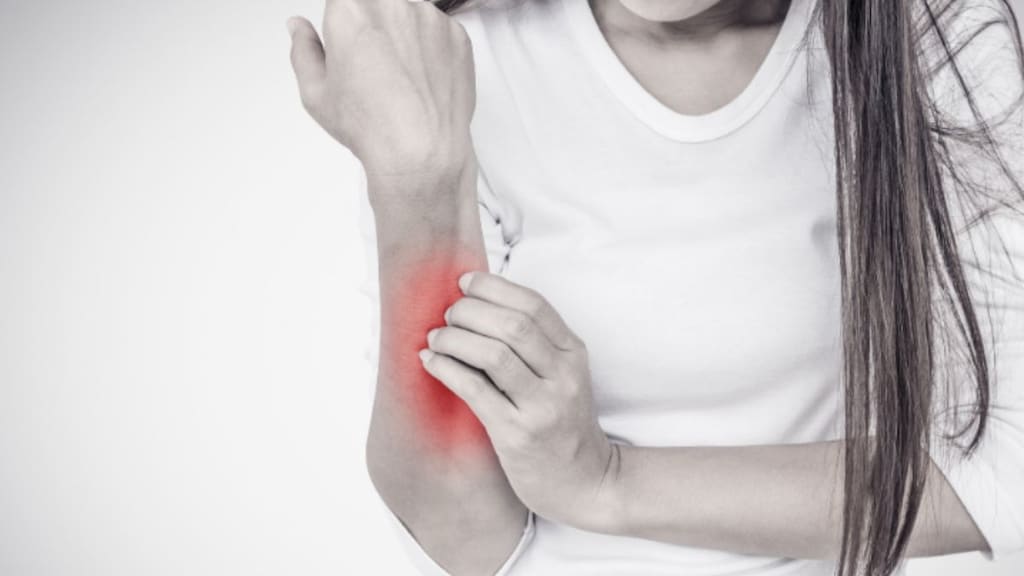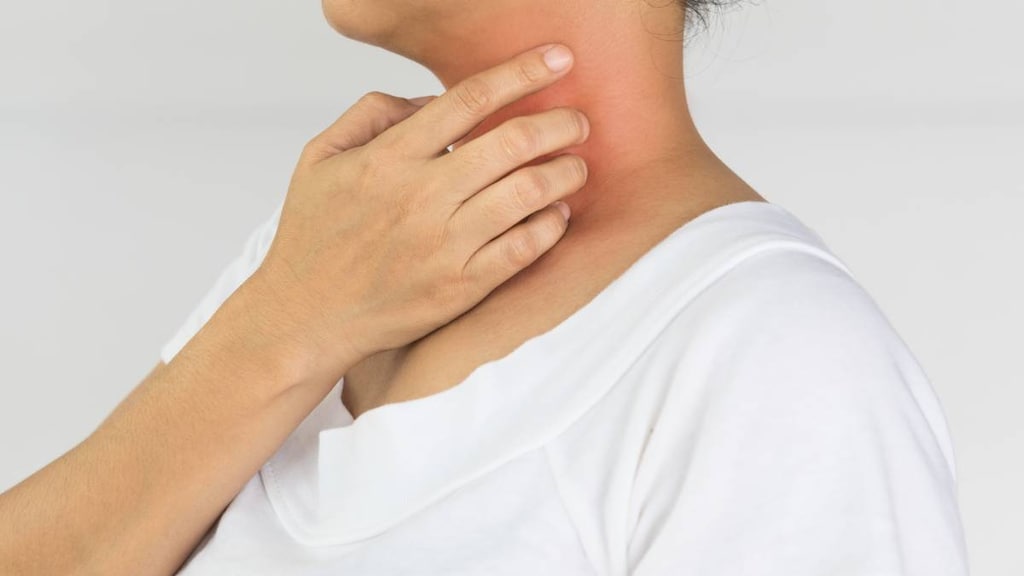Dosage Forms
Excipient information presented when available (limited, particularly for generics); consult specific product labeling. [DSC] = Discontinued product
Cream, External:
Ala-Quin: Clioquinol 3% and Hydrocortisone 0.5% (28.4 g); Clioquinol 3% and hydrocortisone 0.5% (80 g) [contains cetyl alcohol, polysorbate 80]
Kit, External:
Dermasorb AF: Clioquinol 3% and hydrocortisone 0.5% [DSC] [contains cetyl alcohol, polysorbate 80, propylene glycol]
Pharmacology
Mechanism of Action
Clioquinol is a broad spectrum antibacterial and antifungal agent; hydrocortisone is a corticosteroid that decreases inflammation by suppression of migration of polymorphonuclear leukocytes and reversal of increased capillary permeability.
Pharmacokinetics/Pharmacodynamics
Absorption
Topical corticosteroids are absorbed percutaneously. The extent is dependent on several factors, including epidermal integrity (intact vs abraded skin), formulation, and the use of occlusive dressings
Metabolism
Hepatic
Excretion
Urine, bile
Use: Labeled Indications
Dermatologic disorders: Acute and chronic dermatologic disorders including contact or atopic dermatitis; impetiginized eczema; nummular eczema; infantile eczema; endogenous chronic infectious dermatitis; stasis dermatitis; pyoderma; nuchal eczema and chronic eczematoid otitis externa; acne urticata; localized or disseminated neurodermatitis; lichen simplex chronicus; anogenital pruritus (vulvae, scroti, ani); folliculitis; bacterial dermatoses; mycotic dermatoses such as tinea (capitis, cruris, corporis, pedis); moniliasis; intertrigo.
Contraindications
Hypersensitivity to iodochlorhydroxyquin, hydrocortisone, chloroxine, iodine, iodine-containing preparations, or related compounds; eye lesions; tuberculosis of the skin; herpes simplex, vaccinia, eczema vaccinia, varicella, or other viral infections of the skin.
Canadian labeling: Additional contraindications (not in US labeling): Syphilitic skin infections; application to large areas, ulcerated areas, or to the eye; children <2 years.
Dosage and Administration
Dosing: Adult
Dermatologic disorders: Topical: Apply a thin film 3 to 4 times daily.
Vioform Hydrocortisone [Canadian product]: Apply a thin film 2 to 3 times daily.
Dosing: Geriatric
Refer to adult dosing.
Dosing: Pediatric
Dermatologic disorders: Children ≥2 years and Adolescents: Refer to adult dosing.
Administration
For external use only; avoid contact with eyes. Apply a thin film to clean, dry skin and rub in gently. Can stain skin and fabric. Use of occlusive dressings is not recommended.
Storage
Store at 15°C to 30°C (59°F to 86°F); protect from freezing.
Drug Interactions
Aldesleukin: Corticosteroids may diminish the antineoplastic effect of Aldesleukin. Avoid combination
Calcipotriene: Hydrocortisone (Topical) may diminish the therapeutic effect of Calcipotriene. Management: Monitor for reduced calcipotriene efficacy if combined with hydrocortisone valerate. Consider separating the administration of these agents by 10 to 12 hours to minimize the risk of this potential interaction. Monitor therapy
Corticorelin: Corticosteroids may diminish the therapeutic effect of Corticorelin. Specifically, the plasma ACTH response to corticorelin may be blunted by recent or current corticosteroid therapy. Monitor therapy
Deferasirox: Corticosteroids may enhance the adverse/toxic effect of Deferasirox. Specifically, the risk for GI ulceration/irritation or GI bleeding may be increased. Monitor therapy
Hyaluronidase: Corticosteroids may diminish the therapeutic effect of Hyaluronidase. Management: Patients receiving corticosteroids (particularly at larger doses) may not experience the desired clinical response to standard doses of hyaluronidase. Larger doses of hyaluronidase may be required. Consider therapy modification
Ritodrine: Corticosteroids may enhance the adverse/toxic effect of Ritodrine. Monitor therapy
Test Interactions
Thyroid function tests; false-positive ferric chloride test for phenylketonuria.
Adverse Reactions
Reported with combination product; frequency not defined.
Dermatologic: Allergic skin reaction, dyschromia, epidermal thinning, hair discoloration, skin rash
Hematologic & oncologic: Nonthrombocytopenic purpura
Warnings/Precautions
Concerns related to adverse effects:
- Adrenal suppression: Systemic absorption of topical corticosteroids may cause hypercortisolism or suppression of hypothalamic-pituitary-adrenal (HPA) axis, particularly in younger children or in patients receiving high doses for prolonged periods. HPA axis suppression may lead to adrenal crisis.
- Sensitization: Topical use has been associated with irritation (rare); discontinue use if irritation occurs.
- Superinfection: Prolonged use may result in overgrowth of nonsusceptible organisms requiring appropriate therapy.
- Staining: May stain skin and fabrics; may discolor (yellowing) hair and fingernails (rare).
- Systemic effects: Topical corticosteroids may be absorbed percutaneously. Absorption of topical corticosteroids may cause manifestations of Cushing syndrome, hyperglycemia, and/or glycosuria. Absorption is increased by the use of occlusive dressings, application to denuded skin, or application to large surface areas.
Disease-related concerns:
- Hepatic impairment: Use with caution in patients with hepatic impairment.
- Renal impairment: Use with caution in patients with renal impairment.
- Thyroid disease: Use caution in patients with thyroid disease.
Special populations:
- Pediatric: Topical application poses a potential risk of toxicity to infants and children; striae has been reported with use of some corticosteroids in infants and children. Children may absorb proportionally larger amounts of corticosteroids after topical application and may be more prone to systemic effects. HPA axis suppression, intracranial hypertension, and Cushing syndrome have been reported in children receiving topical corticosteroids. Prolonged use may affect growth velocity; growth should be routinely monitored in pediatric patients.
Other warnings/precautions:
- Appropriate response: Re-evaluate patient if no response within 1 to 2 weeks.
- Appropriate use: Avoid use on large or eroded areas, use for >1 week, and use of occlusive dressings.
Monitoring Parameters
Observe affected area for increased irritation; growth in children.
Pregnancy
Pregnancy Risk Factor
C
Pregnancy Considerations
Adverse events have been observed with corticosteroids in animal reproduction studies. Topical products are not recommended for extensive use, in large quantities, or for long periods of time in pregnant women (Reed, 1997).
Patient Education
- Discuss specific use of drug and side effects with patient as it relates to treatment. (HCAHPS: During this hospital stay, were you given any medicine that you had not taken before? Before giving you any new medicine, how often did hospital staff tell you what the medicine was for? How often did hospital staff describe possible side effects in a way you could understand?)
- Patient may experience burning or dryness. Have patient report immediately to prescriber signs of high blood sugar (confusion, fatigue, increased thirst, increased hunger, passing a lot of urine, flushing, fast breathing, or breath that smells like fruit), signs of adrenal gland problems (severe nausea, vomiting, severe dizziness, passing out, muscle weakness, severe fatigue, mood changes, lack of appetite, or weight loss), signs of Cushing’s disease (weight gain in upper back or abdomen; moon face; severe headache; or slow healing), signs of skin changes (acne, stretch marks, slow healing, or hair growth), skin thinning, or skin irritation (HCAHPS).
- Educate patient about signs of a significant reaction (eg, wheezing; chest tightness; fever; itching; bad cough; blue skin color; seizures; or swelling of face, lips, tongue, or throat). Note: This is not a comprehensive list of all side effects. Patient should consult prescriber for additional questions.
Intended Use and Disclaimer: Should not be printed and given to patients. This information is intended to serve as a concise initial reference for healthcare professionals to use when discussing medications with a patient. You must ultimately rely on your own discretion, experience and judgment in diagnosing, treating and advising patients.



